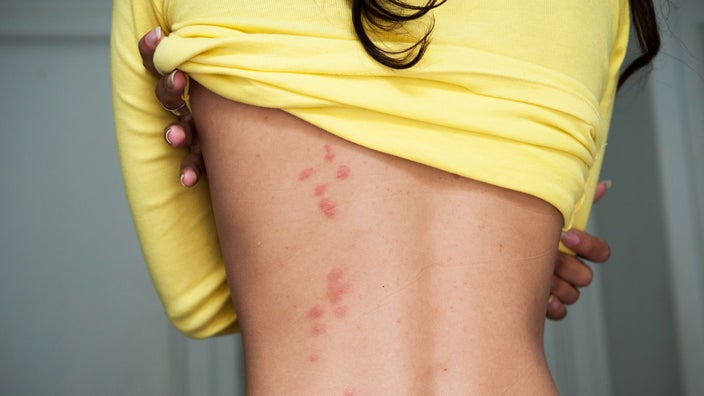The Ultimate Bed Bug Therapy Handbook: Professional Insights and Recommendations
Within the realm of pest control, bed bugs present a distinct challenge with their elusive nature and resistant existence. The pursuit for effective bed insect therapy methods has led to a plethora of suggestions and services, some more trustworthy than others. In this handbook, experts in the field offer their understandings and suggestions based upon years of experience combating these consistent parasites. From recognizing bed insect actions to implementing prevention techniques and determining invasions, this detailed guide intends to furnish visitors with the knowledge required to take on bed insect issues effectively.

Comprehending Bed Insect Actions
Recognizing the intricate behavior patterns of bed bugs is essential for efficient bug control techniques. Bed pests, scientifically understood as Cimex lectularius, are tiny, reddish-brown parasitic bugs that prey on the blood of human beings and pets. These nocturnal parasites are experienced at hiding in cracks and gaps near their hosts' resting areas, making them challenging to spot and eradicate.

Effective Prevention Strategies
One of the vital avoidance strategies is to on a regular basis examine and clean locations where bed insects can hide, such as bedding, furnishings, and cracks in wall surfaces. When acquiring pre-owned furnishings or apparel, examining items completely prior to bringing them right into the home is vital in stopping bed bug problems. By incorporating these preventive procedures into normal home routines, people can dramatically lower the likelihood of bed bug infestations.
Identifying Bed Insect Invasions
Upon getting in an area believed of a bed pest problem, one might see tiny red or brownish places on bed linens or furnishings, showing the visibility of these parasites. Bed pests usually leave behind these warning fecal stains as they feed on human blood throughout the evening. One more typical indication of a bed insect infestation is the presence of molted exoskeletons shed by expanding bed pests. These exoskeletons are transparent and can be discovered near their hiding spots. Additionally, bed bug attacks on the skin, which show up as red and scratchy welts typically organized in a line or cluster, might recommend an invasion.
A musty smell in the space could additionally suggest the presence of bed pests, as these bugs launch pheromones that lead to a distinct smell. Inspecting splits and gaps in furniture, wall surfaces, and bed mattress joints may reveal real bed insects, which are reddish-brown, oval-shaped pests regarding the size of an apple seed. Comprehending these signs is critical for early discovery and effective therapy of bed bug invasions.
Recommended Treatment Approaches
Effective bed pest treatment techniques depend on a combination of thorough inspection, targeted elimination, and safety nets to get rid of infestations successfully. The very first step in dealing with bed pests is a comprehensive examination to identify the degree of the problem. This frequently includes checking out areas where bed insects are most likely to hide, such as cushion joints, furniture joints, and electric outlets. As soon as the problem is confirmed, targeted extermination techniques can be used. Usual approaches include utilizing insecticides, warm therapies, or cold strategies to kill bed bugs in all life phases. It is necessary to comply with the guidelines given by pest control professionals when using these methods to guarantee security and efficiency.
In enhancement to elimination, safety nets play a vital function in avoiding future infestations. This consists of consistently cleansing and decluttering living areas, sealing cracks and holes where bed insects can hide, and making use of cushion encasements to protect versus problems. By integrating comprehensive inspection, targeted elimination, and precautionary steps, people can successfully fight bed pest invasions and maintain a bed bug-free setting.
Maintaining a Bed Bug-Free Setting
After carrying out effective bed insect therapy approaches, maintaining a bed bug-free environment needs constant caution and aggressive measures to avoid future invasions. Regularly examining living areas, particularly beds, furnishings, and splits in wall surfaces, is crucial. Encasing cushions and box springtimes with bed bug-proof covers can prevent any remaining bed bugs from leaving or new ones from infesting. Vacuuming on a regular basis, specifically along walls, carpetings, and furniture, aids to get rid of any ez exterminator chicago type of prospective bed insects or eggs. Furthermore, washing and drying bedding, bed linens, and clothing on high heat can eliminate any kind of bed pests existing. It is necessary to declutter living areas to decrease hiding spots for bed pests. Securing fractures and crevices in walls, furnishings, and various other prospective hiding spots can restrict bed insect activity and avoid infestations. If taking a trip or acquiring pre-owned furniture, inspect things completely before bringing them right into the home. ez bed bug exterminator chicago. By complying with these proactive measures continually, a bed bug-free atmosphere can be maintained properly.
Conclusion
